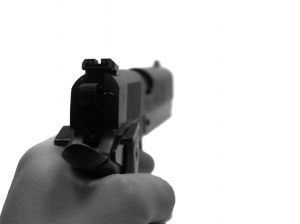Since 1993
How to Dismiss a Concealed Weapon Charge

Here’s a few basic principles of any criminal justice system. Juries are typically the fact finders. Judges are typically referees, calling balls and strikes throughout the process. But, what happens when the facts of a case are so weak that there is no need to have a jury trial? Well, we defense attorneys ask the judge to step into the fray, and make factual determination that will cause the case to be dismissed. Prosecutors don’t want judges dismissing weak cases, because they know that many defendants cannot afford the risk of going to trial, even on weak facts. Technically, when a criminal defense attorney poses this question to a judge, it is in the form of a Motion to Dismiss. This motion tells the court that the facts of the case do not constitute the crime charged, so why waste time tax payer money? We’re going to take a look one such waste of money, found in O.S. V. State, 120 So. 3d 130 (Fla. 3d DCA 2013).
O.S. was convicted of possession of a concealed weapon (brass knuckles) in his vehicle. Now, several issues may be examined in a concealed weapons case, issues regarding the stop of the vehicle, issues regarding constructive possession, or issues regarding the definition of a weapon. But the issue for today involves what constitutes “concealed”. And, who gets to make a determination as to what is concealed–the judge, or the jury?
When O.S. was pulled over for a bad tag light (yes, a classic bogus stop) the officer asked him to step out of the car. Once the door opened, the officer “could observe the brass knuckles sitting in the pocket by the driver’s door.” Id. An important question on any concealed weapons charge involves the degree to which the weapon was recognized by the officer. In this case, the defense attorney’s cross examination noted that the officer recognized the weapon “right away”. Id. O.S. also admitted to the officer that he had the brass knuckles in the car.
So, what exactly is a concealed weapon? Florida Statute 790.001(3)(a) defines it as “any dirk, metallic knuckles, slungshot, billie, tear gas gun, chemical weapon or device, or other deadly weapon carried on or about a person in such a manner as to conceal the weapon from the ordinary sight of another person”. Id. The appeals court delves right into the issue spelled out above–who gets to decide what is “concealed”; judge or jury? The appellate court reasoned that “although the Florida Supreme Court has held that ‘the issue of concealment is ordinarily an issue for the trier of fact,’ there are times when concealment can be determined as a matter of law.” Id. [internal citations omitted]. The analysis here hinges upon three factors set forth in the Florida Supreme Court case of Dorelus v. State, 747 So. 2d 368 (Fla. 1999). First, where was the weapon located within the car? Second, was the weapon covered by anything? And third, did the defendant move his body so as to hide the weapon from law enforcement? And, as a bonus factor, Dorelus takes into account any “statement by the observing officer that he or she was able to ‘immediately recognize’ the questioned object as a weapon”. Id. If the weapon is immediately recognized, the court may find “that the weapon was not concealed as a matter of law because it was not hidden from ordinary observation.” Id. Dorelus at 372. Remember, when the court says that something can be decided “as a matter of law”, what they’re really saying is that “there’s no need for this to go to a jury, the judge can simply dismiss these charges.” When the court says “this is an issue for the trier of fact”, they’re telling us that the jury must decide the issue. (We’re going to see this phrase “as a matter of law” two more times in this appellate decision)
When the court considered all of these factors together, O.S.’s conviction was overturned because the weapon was not “concealed.” First, the weapon was “not covered by any other object”, and “O.S. made no attempt to conceal the weapon with his body in any way. In fact, he immediately admitted to possessing the weapon upon questioning by the officer.” Id. at 131-132. Don’t let this last point slide by. The fact that O.S. admitted that the weapon was there provided additional proof that O.S. was not trying to conceal it. And, as if the court hadn’t already explained what a waste of taxpayer money O.S.’s trial must have been, they found one more reason: “More importantly, the officer testified that he identified the weapon “right away”. As noted in Dorelus, this alone may demonstrate as a matter of law that the weapon was not concealed. . .here, where the officer’s observation is coupled with the facts discussed above, we have no difficulty in holding that the weapon was not concealed as a matter of law.” Id.
My website has a sample Motion to Dismiss a concealed firearm charge, for your reading enjoyment.








